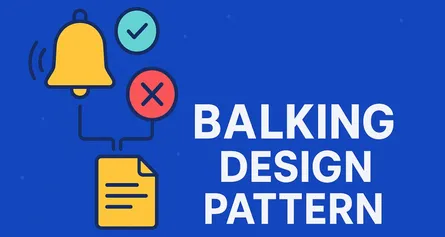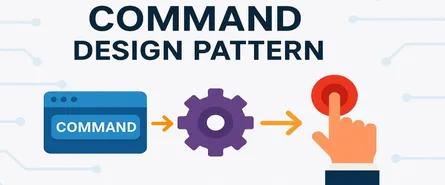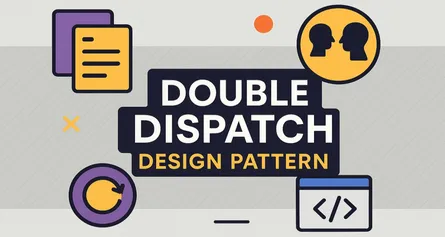
Mastering the State Design Pattern in C#: Your Ultimate Guide for Microsoft Software Architects
Ever felt like your software objects have mood swings? One moment they’re cooperative, the next, they’re stubbornly refusing your requests. It’s as if your object suddenly changed its “personality” and decided to behave differently based on its mood or state. But wait—what if that’s exactly what’s happening?
Welcome to the State Design Pattern. It’s your object’s mood ring, helping it behave differently depending on its internal state without cluttering your code with endless if-else blocks. If you’re a software architect or developer using Microsoft technologies, especially C#, you’re about to unlock one of the most elegant and powerful patterns out there. Ready to level up your software’s emotional intelligence? Let’s dive in!
What is the State Design Pattern?
Imagine a vending machine—it behaves differently depending on whether it’s got money inserted, an item selected, or an empty stock. The State Design Pattern does exactly this for your objects—it lets an object alter its behavior when its internal state changes, making it seem like the object itself changed its class. Confused? Stay with me!
Instead of flooding your methods with countless conditions:
if (state == "Open")
{
// Do open stuff
}
else if (state == "Closed")
{
// Do closed stuff
}
else if (state == "Paused")
{
// You get the picture
}You let the object itself handle its behavior based on its current state by delegating state-specific logic to separate state objects. That’s right—objects managing their own behavior like mature adults. This keeps your code clean, maintainable, and expandable.
Principles of the State Design Pattern
Before you code your heart out, let’s grasp the essential principles:
Single Responsibility Principle (SRP)
Each state is encapsulated in its own class and is responsible only for its behavior. No state meddles in another state’s business. It’s like every state has its own desk—no messy coworker interference!
Open/Closed Principle (OCP)
You can easily introduce new states without touching existing code. New features without side-effects? Yes, please!
Dependency Inversion Principle (DIP)
Your objects depend on abstractions (interfaces or abstract classes), not on concrete implementations. Your client class doesn’t even know exactly what state it’s in—only that it has one.
When Should You Use the State Pattern?
Great power comes with wise usage. Here’s when to pull this tool from your toolbox:
- Behavior Changes with State: When an object’s behavior heavily depends on its state, making your code cluttered with conditional logic.
- Complex Conditional Logic: If your object methods contain complicated conditional statements (big if-else or switch statements), it’s time for state.
- Clear and Maintainable Code: You want your code to remain clean, readable, and easy to maintain—especially if you’re frequently adding or removing states.
Key Components of the State Pattern
Four main pieces make up the state puzzle:
1. Context
The object whose behavior varies as its internal state changes. It maintains a reference to a State object representing its current state.
2. State Interface
Defines a common interface for all concrete states. Your context interacts with this interface, oblivious to the specific state.
3. Concrete States
Implementations of the State interface, each representing different behaviors associated with a particular state.
4. Client
The code that sets up and changes the states by interacting with the context.
Detailed Implementation in C#: Step-by-Step Guide with Example
Enough theory—let’s roll up our sleeves. We’ll illustrate this using a real-world scenario:
Example Scenario: Media Player
Let’s create a simple media player that changes behavior depending on its state:
- Playing
- Paused
- Stopped
Here’s how you implement this elegantly using C#.
Step 1: Define the State Interface
First, let’s declare our state interface. This interface ensures that all states adhere to the same behaviors:
// State.cs
public interface IMediaPlayerState
{
void Play(MediaPlayer player);
void Pause(MediaPlayer player);
void Stop(MediaPlayer player);
}Step 2: Concrete States Implementation
Now let’s create three concrete state classes—PlayingState, PausedState, and StoppedState.
▶️ PlayingState
// PlayingState.cs
public class PlayingState : IMediaPlayerState
{
public void Play(MediaPlayer player)
{
Console.WriteLine("Already playing. Enjoy the music!");
}
public void Pause(MediaPlayer player)
{
Console.WriteLine("Pausing playback...");
player.SetState(new PausedState());
}
public void Stop(MediaPlayer player)
{
Console.WriteLine("Stopping playback.");
player.SetState(new StoppedState());
}
}⏸️ PausedState
// PausedState.cs
public class PausedState : IMediaPlayerState
{
public void Play(MediaPlayer player)
{
Console.WriteLine("Resuming playback...");
player.SetState(new PlayingState());
}
public void Pause(MediaPlayer player)
{
Console.WriteLine("Already paused. Nothing new here!");
}
public void Stop(MediaPlayer player)
{
Console.WriteLine("Stopping playback from pause.");
player.SetState(new StoppedState());
}
}⏹️ StoppedState
// StoppedState.cs
public class StoppedState : IMediaPlayerState
{
public void Play(MediaPlayer player)
{
Console.WriteLine("Starting playback.");
player.SetState(new PlayingState());
}
public void Pause(MediaPlayer player)
{
Console.WriteLine("Cannot pause—nothing’s playing!");
}
public void Stop(MediaPlayer player)
{
Console.WriteLine("Already stopped.");
}
}Step 3: Context Implementation
The MediaPlayer class is your context. It maintains the current state and delegates behavior to the state objects:
// MediaPlayer.cs
public class MediaPlayer
{
private IMediaPlayerState _state;
public MediaPlayer()
{
_state = new StoppedState();
}
public void SetState(IMediaPlayerState state)
{
_state = state;
Console.WriteLine($"State changed to: {_state.GetType().Name}");
}
public void Play()
{
_state.Play(this);
}
public void Pause()
{
_state.Pause(this);
}
public void Stop()
{
_state.Stop(this);
}
}Step 4: The Client Code
The client (your main app or service) interacts with the context:
// Program.cs
class Program
{
static void Main(string[] args)
{
var player = new MediaPlayer();
player.Play(); // Starting playback.
player.Pause(); // Pausing playback...
player.Play(); // Resuming playback...
player.Stop(); // Stopping playback.
player.Stop(); // Already stopped.
}
}Result Output:
Starting playback.
State changed to: PlayingState
Pausing playback...
State changed to: PausedState
Resuming playback...
State changed to: PlayingState
Stopping playback.
State changed to: StoppedState
Already stopped.Beautiful, isn’t it? Each state handles its responsibilities independently, and your MediaPlayer remains blissfully ignorant about the details.
Different Ways to Implement the State Pattern (with C# Examples)
You’ve seen one way to implement the State Pattern. But guess what? There’s more than one way to solve a puzzle. Let’s explore alternative implementations, each with its own flair. Ready for some stateful adventures?
Method 1: States as Nested Classes
Instead of separate files, your state classes can be nested within your context. This makes sense when states are tightly coupled to the context.
️ Example in C#
// MediaPlayer.cs with Nested Classes
public class MediaPlayer
{
private IMediaPlayerState _state;
public MediaPlayer()
{
_state = new StoppedState(this);
}
public void SetState(IMediaPlayerState state)
{
_state = state;
Console.WriteLine($"State changed to: {_state.GetType().Name}");
}
public void Play() => _state.Play();
public void Pause() => _state.Pause();
public void Stop() => _state.Stop();
private interface IMediaPlayerState
{
void Play();
void Pause();
void Stop();
}
private class PlayingState : IMediaPlayerState
{
private readonly MediaPlayer _player;
public PlayingState(MediaPlayer player) => _player = player;
public void Play() => Console.WriteLine("Already playing.");
public void Pause()
{
Console.WriteLine("Pausing playback...");
_player.SetState(new PausedState(_player));
}
public void Stop()
{
Console.WriteLine("Stopping playback.");
_player.SetState(new StoppedState(_player));
}
}
private class PausedState : IMediaPlayerState
{
private readonly MediaPlayer _player;
public PausedState(MediaPlayer player) => _player = player;
public void Play()
{
Console.WriteLine("Resuming playback...");
_player.SetState(new PlayingState(_player));
}
public void Pause() => Console.WriteLine("Already paused.");
public void Stop()
{
Console.WriteLine("Stopping playback from pause.");
_player.SetState(new StoppedState(_player));
}
}
private class StoppedState : IMediaPlayerState
{
private readonly MediaPlayer _player;
public StoppedState(MediaPlayer player) => _player = player;
public void Play()
{
Console.WriteLine("Starting playback.");
_player.SetState(new PlayingState(_player));
}
public void Pause() => Console.WriteLine("Cannot pause—nothing’s playing.");
public void Stop() => Console.WriteLine("Already stopped.");
}
}This keeps your states close to home (literally), but be careful—it can become messy if you have lots of states.
Method 2: Using Dictionaries for State Management
Sometimes you prefer simplicity—less classes, more straightforward mappings. Using a dictionary for states could be your best buddy.
️ Example in C#
// Simplified State Management with Dictionary
public enum PlayerState
{
Playing,
Paused,
Stopped
}
public class MediaPlayer
{
private PlayerState _currentState;
private readonly Dictionary<PlayerState, Action> _stateActions;
public MediaPlayer()
{
_currentState = PlayerState.Stopped;
_stateActions = new Dictionary<PlayerState, Action>
{
{ PlayerState.Playing, () => Console.WriteLine("Playing music!") },
{ PlayerState.Paused, () => Console.WriteLine("Paused playback.") },
{ PlayerState.Stopped, () => Console.WriteLine("Stopped playback.") }
};
}
public void SetState(PlayerState state)
{
_currentState = state;
_stateActions[_currentState]();
}
}Easy-peasy lemon-squeezy. But it sacrifices flexibility—you might have to refactor heavily later.
Real-world Use Cases
Where can the State Pattern truly shine in your projects? Here are practical examples:
- Order Management Systems: Manage order states (Pending, Confirmed, Shipped, Delivered, Canceled).
- User Interface Elements: Buttons with states (Active, Disabled, Hover, Clicked).
- Games: Character states (Idle, Running, Jumping, Attacking).
- Network Connections: Connections states (Connected, Disconnected, Connecting, Reconnecting).
Anti-Patterns to Avoid
State Pattern is awesome—unless misused. Here are common traps:
Anti-pattern #1: Too Many States
Creating states for every tiny behavior might clutter your project. Be mindful—group closely related behaviors together.
Anti-pattern #2: Hardcoded State Changes
Avoid directly manipulating state transitions within your states without proper abstraction. It defeats the flexibility and defeats the point!
Anti-pattern #3: Context Dependent States
States depending too tightly on context internals lead to a tight coupling—making maintenance harder. Always use interfaces to decouple dependencies.
Advantages of the State Pattern
- Simplifies Complex Logic: No messy
if-elsejungles. Your logic is crystal-clear. - Flexibility & Scalability: Easy to add new states without rewriting existing code.
- Better Maintainability: Separate states mean you can debug and extend effortlessly.
- Single Responsibility Principle Compliance: Each state handles its own logic clearly.
️ Disadvantages of the State Pattern
- Complexity Overkill: If your state logic is simple, the State Pattern might add unnecessary complexity.
- Too Many Classes: Lots of states can mean a cluttered namespace. Manage wisely!
- Potential Tight Coupling: Without proper abstraction, states might overly depend on context details.
Anti-patterns to Avoid (Again, Because They Matter!)
Let’s reiterate common pitfalls clearly:
- Excessive Granularity: Don’t break every tiny behavior into states. Keep related behavior grouped.
- Direct State Transition Calls: Always encapsulate transitions through context methods or proper abstractions.
- State Knowledge of Other States: One state shouldn’t know about another. States must be isolated, independent entities.
Conclusion: Unlocking the Power of State Pattern
Whew! You’ve journeyed through the world of the State Design Pattern—exploring definitions, principles, implementations, use cases, advantages, disadvantages, and pitfalls to dodge.
The State Pattern gives your objects emotional intelligence, helping them behave differently based on their internal mood. It’s clean, maintainable, flexible, and it keeps your sanity intact by managing complexity effectively.
Next time you’re faced with objects exhibiting multiple behaviors based on their states, you’ll know exactly what pattern to use—and more importantly, how to use it effectively.
Share this article
Help others discover this content
About Sudhir mangla
Content creator and writer passionate about sharing knowledge and insights.
View all articles by Sudhir mangla →




